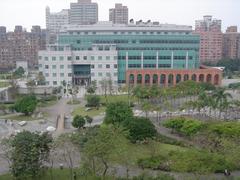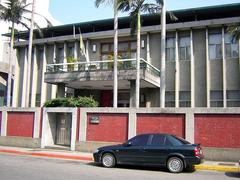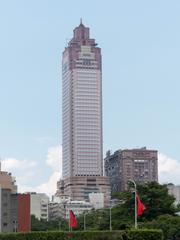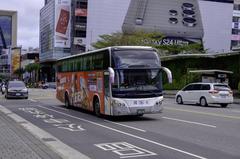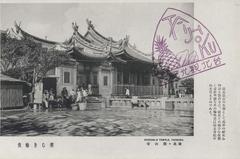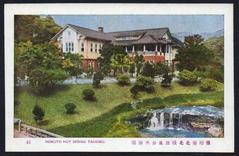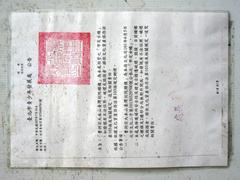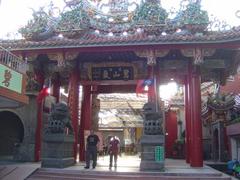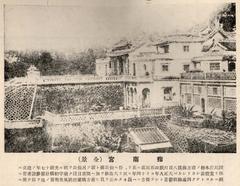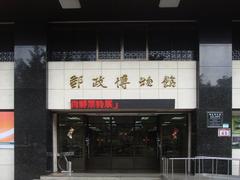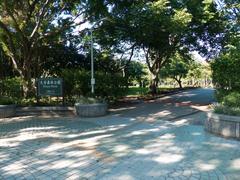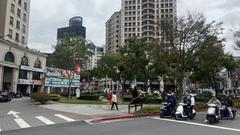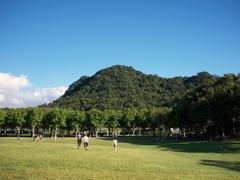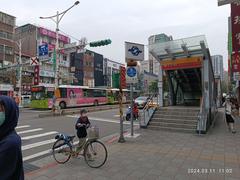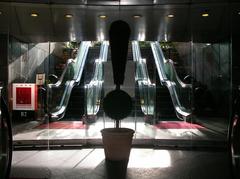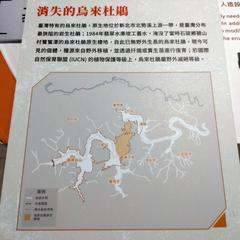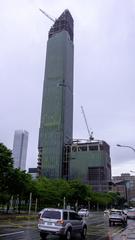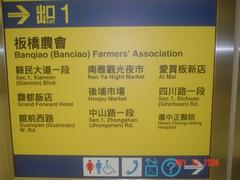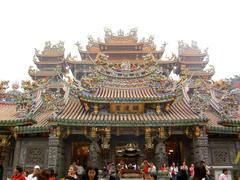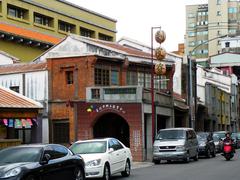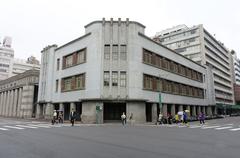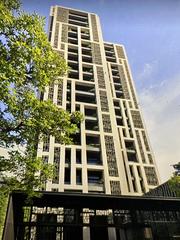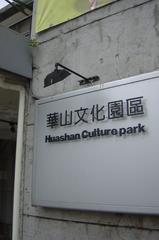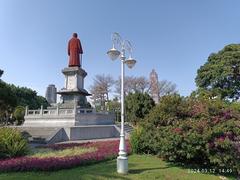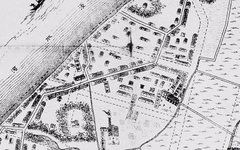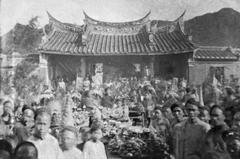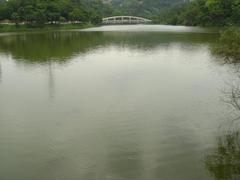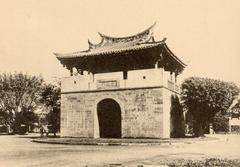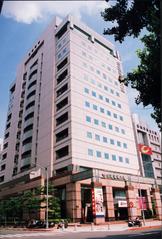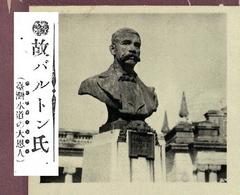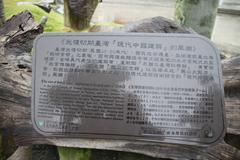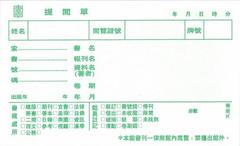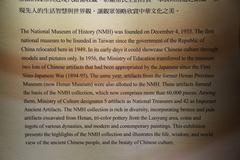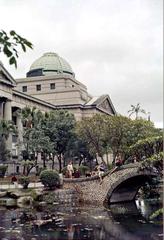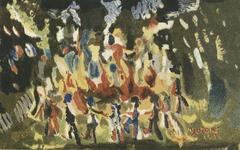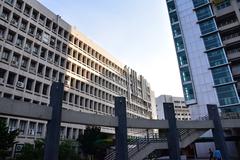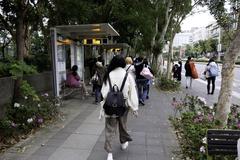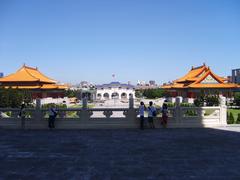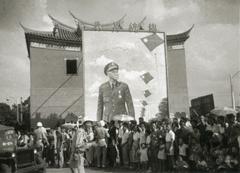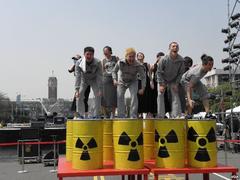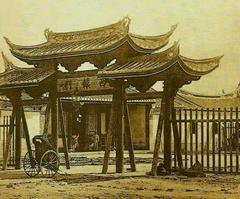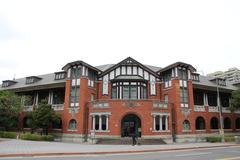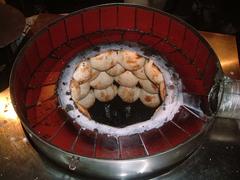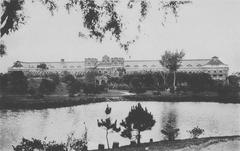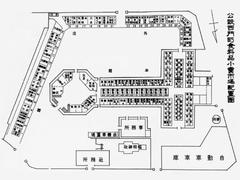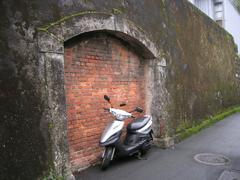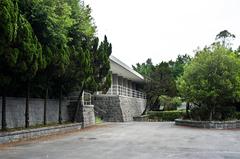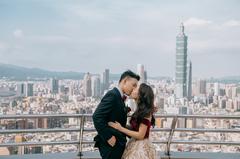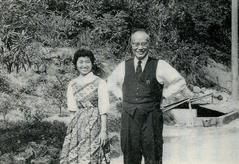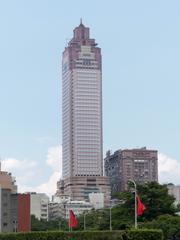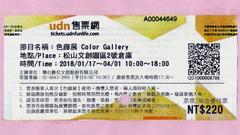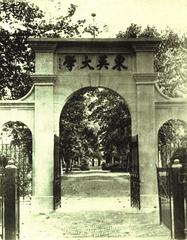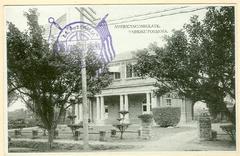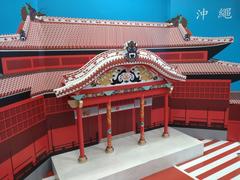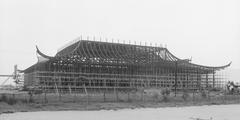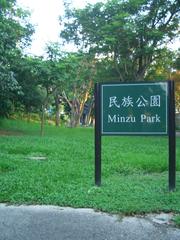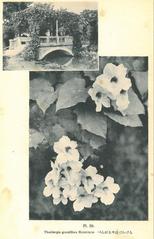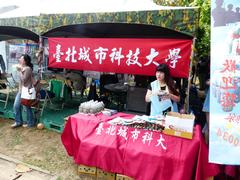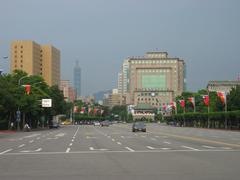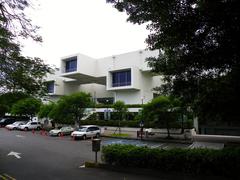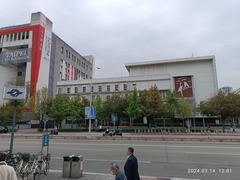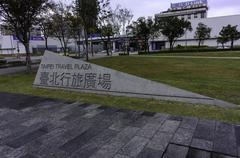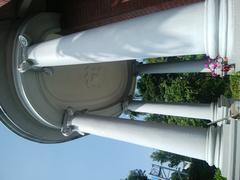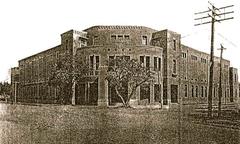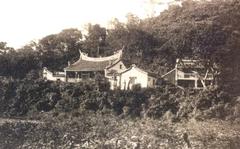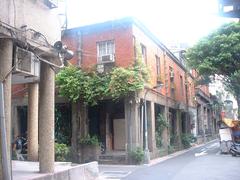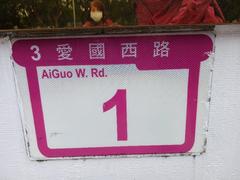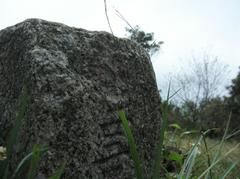Fanzaicuo Baode Temple: Visiting Hours, Tickets, and Taipei Historical Sites Guide
Date: 04/07/2025
Introduction: The Cultural Heart of Fanzaicuo Baode Temple
Fanzaicuo Baode Temple (番仔厝保德宮) is a vibrant emblem of Taipei’s enduring spiritual and cultural legacy. Founded during the Qing Dynasty by Han Chinese settlers from Fujian, the temple stands as a living testament to the city’s syncretic religious practices and rich architectural heritage. Dedicated to Baode Dadi, the guardian of protection and virtue, the temple weaves together Taoist, Buddhist, and folk traditions. Its ornate Southern Chinese (Minnan) features—swallowtail roofs, intricate wood carvings, and colorful porcelain inlays—tell stories of divine legends and community resilience.
Surviving Japanese colonial pressures and rapid urbanization, Fanzaicuo Baode Temple remains a cornerstone of local identity. Its calendar is marked by vibrant festivals, notably the Baosheng Cultural Festival, and daily rituals that anchor community life. With accessible facilities and a welcoming atmosphere, the temple invites both worshippers and tourists to experience Taipei’s living heritage. Conveniently located near major metro stations and historic districts like Dihua Street and the Taipei Confucius Temple, the temple is an essential stop for those seeking insight into Taiwan’s religious and architectural traditions (nickkembel.com, travel.taipei, english.culture.gov.taipei, lifeintaiwan.com).
Table of Contents
- The Historical Roots of Fanzaicuo Baode Temple
- Visitor Information
- Rituals, Festivals, and Community Life
- Architectural Highlights
- Frequently Asked Questions (FAQ)
- Summary & Travel Recommendations
- Sources
The Historical Roots of Fanzaicuo Baode Temple
Early Settlement and Temple Foundation
The Taipei Basin was originally inhabited by the Ketagalan indigenous people (thenandnows.com). With the arrival of Han settlers from Fujian in the 18th century, new religious traditions flourished. Temples like Fanzaicuo Baode became centers for spiritual practice and social life, reflecting the settlers’ desire to maintain ancestral customs and seek divine protection (ai.shareba.com).
Established in the late Qing era, the temple was dedicated to Baode Dadi, a deity embodying protection and virtue. It quickly became a focal point for both worship and community organization (nickkembel.com).
Architectural and Artistic Heritage
Fanzaicuo Baode Temple is a showcase of Minnan architecture:
- Swallowtail Roofs: Distinctive upturned eaves, symbolizing fortune.
- Intricate Carvings & Porcelain Inlays: Depicting mythological themes and nature.
- Colorful Palette: Red, gold, and green dominate, signifying prosperity and harmony.
- Central Courtyard: Facilitates rituals and community gatherings.
These features exemplify the skill of local artisans and echo the temple’s narrative role in preserving collective memory (ai.shareba.com).
Japanese Colonial Era and Preservation
Despite widespread temple repurposing during Japanese rule, Fanzaicuo Baode Temple endured as a bastion of Han tradition and quiet resistance (thenandnows.com). Its resilience allowed it to continue serving as a spiritual and cultural anchor through tumultuous times.
Postwar Significance and Modern Recognition
After World War II, the temple’s role in the community only deepened, with festivals, rituals, and charity work enriching local life (nickkembel.com). Recent decades have seen focused preservation efforts by Taipei’s Department of Cultural Affairs, ensuring the temple’s continued vibrancy (english.culture.gov.taipei).
Visitor Information
Visiting Hours & Admission
- General Hours: Open daily from 7:00 AM to 9:00 PM.
- Admission: Free for all visitors.
Accessibility
The temple is wheelchair accessible, with paved walkways and ramps. Staff assistance is available upon request.
Getting There
- By Metro: Alight at Beimen Station (Green Line); the temple is a 10-minute walk away.
- By Bus: Multiple city bus routes stop in the vicinity.
- Parking: Limited street parking; public transport is recommended, especially during festivals.
Guided Tours & Special Events
Guided tours are occasionally offered, particularly during major festivals or by arrangement with local cultural groups. The Baosheng Cultural Festival (third lunar month) is a highlight, featuring parades, performances, and special rituals (Taipei Event Calendar).
Nearby Attractions
Enhance your visit by exploring these nearby sites:
- Dihua Street: Historic shopping street with traditional shops.
- Taipei Confucius Temple: A tranquil space dedicated to Confucian learning.
- Dadaocheng Wharf: Scenic riverside with historical significance.
- Longshan Temple: Another major religious landmark within reach.
Photography Tips
- Photography is generally permitted in public areas. Avoid flash near altars and be respectful of ongoing rituals.
Rituals, Festivals, and Community Life
Daily Worship Practices
The temple’s main deity, Baosheng Dadi, draws worshippers seeking blessings for health and protection. Daily rituals include incense offering, tossing divination blocks, making food offerings, and drawing fortune slips or purchasing amulets (lifeintaiwan.com).
Major Festivals
- Baosheng Cultural Festival (April–May): Taipei’s largest celebration honoring Baosheng Dadi, with processions, lion dances, folk opera, and community feasts.
- Ghost Festival (7th lunar month): Offerings to wandering spirits.
- Lunar New Year: Special prayers and festive decorations.
In 2003, the temple received a UNESCO Asia-Pacific Heritage Award for preserving intangible cultural heritage (jubiletravel.com).
Community Engagement
Fanzaicuo Baode Temple is deeply integrated into local life. It supports charity work, educational programs, and provides a communal space for social events. The temple’s activities foster cross-generational participation and help sustain traditional values.
Etiquette & Visitor Participation
- Dress modestly; cover shoulders and knees.
- Observe local worship before participating.
- Move in a clockwise direction around altars.
- Be quiet and respectful during prayers and rituals.
Architectural Highlights
Layout & Structure
The temple follows a traditional north-south axis, comprising:
- Front Hall (shanmen): Ornate entrance with guardian statues.
- Main Hall (dadian): Houses the main deity and is the focal point for ceremonies.
- Rear Hall (hou dian): Contains secondary altars and ancestral tablets.
Open courtyards, side corridors, and subsidiary pavilions create a harmonious, light-filled atmosphere (Taipei temple architecture).
Decorative Details
- Roofs: Swallowtail ridges, glazed tiles, and ceramic figurines of mythological creatures.
- Carvings: Wooden doors and beams with dragons, phoenixes, and peonies.
- Murals: Painted panels depicting deities and local legends.
- Stone Lions: Flank the entrance, symbolizing protection.
Symbolism & Iconography
Colors, motifs, and spatial organization all carry deep symbolic meaning—red for joy and protection, gold for divinity, dragons and phoenixes for harmony, and lotus flowers for purity (Taipei temple symbolism).
Restoration Efforts
Ongoing preservation ensures authenticity, with restoration led by skilled artisans using traditional methods (english.culture.gov.taipei).
Frequently Asked Questions (FAQ)
Q: What are the temple’s opening hours?
A: Open daily from 7:00 AM to 9:00 PM.
Q: Is there an entrance fee?
A: No, admission is free.
Q: Are guided tours available?
A: Occasionally, especially during festivals. Inquire at the temple or with local tourism offices.
Q: Is the temple accessible for visitors with disabilities?
A: Yes, there are ramps and accessible pathways.
Q: Can I take photos inside the temple?
A: Yes, but avoid flash and be mindful of worshippers.
Summary & Travel Recommendations
Fanzaicuo Baode Temple is a cornerstone of Taipei’s religious and cultural landscape. Its Qing Dynasty origins, artistic mastery, and vibrant festivals create a profound visitor experience. The temple’s open, inclusive atmosphere—paired with free admission, accessible facilities, and occasional guided tours—makes it an ideal destination for both cultural discovery and spiritual reflection. Combine your visit with nearby heritage sites to deepen your understanding of Taipei’s history.
For the best experience, check festival calendars and use public transportation. To enrich your visit, download the Audiala app for guided tours and insider tips, and stay connected via social media for the latest updates (travel.taipei, jubiletravel.com, english.culture.gov.taipei).
Sources
- Nick Kembel – Best Taipei Temples
- Taipei Travel – Fanzaicuo Baode Temple
- The Broke Backpacker – Best Places to Visit in Taipei
- Life in Taiwan – Temple Traditions
- Taipei Department of Cultural Affairs – Heritage Recognition
- Taipei Event Calendar 2025
- Jubilee Travel – Temples in Taiwan
